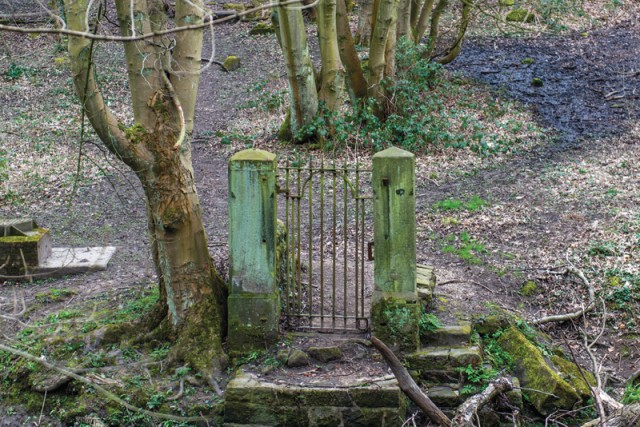
If you pay close attention, the clues are there from the start in Way Through The Wood, a guided walking performance in Meanwood Park and the Hollies by Leeds performing arts company, A Quiet Word. Arising out of conversations and workshops with people from the local community, the piece is a moving and intensely personal meditation on the subject of loss.
Assembling in the former W.I. meeting place at the edge of Meanwood Park – now a Rangers Hut, complete with bunting and the affable whiff of anachronism – the performance initially takes the form of a pleasant ramble in the woods. Accompanying the party is Virgil, a guide whose stentorian tones and rustic garb smack of folklore eccentricity. He bids each person take a stone – which he ominously coins a ‘burden’ – and imbue it with something he or she would wish to lose along the way. This notion of loss – indeed, of being lost in the woods themselves – forms a goodly part of the evening’s ceremony.
With stones in pocket, the party heads out into Meanwood Park proper. Open to the public since 1922, its present size owes much to the Kitson Clark family estate of Meanwoodside which was purchased and incorporated by Leeds City Council in 1954. It is huge and varied, an outlying expanse of natural and man-made terrain, boasting of a history that can be traced back to the Bronze Age. The performance seeks to question and explore visitors’ connection with this landscape through a sequence of seemingly chance encounters along the darkening way.
There are ghosts in these woods, strange cagouled spirits who dart amongst the shadows, throw stones, and divert attention. There are unexpected incursions and theatrical sleights of hand. The hunched figure of a girl, half-closeted amongst the trees, stabs intently at the ground before her. Tarrying beside a wooden bridge, Virgil warns his party to be on their guard against witches and boggarts. He reads aloud a poem by W B Yeats (symbolically it is The Song of Wandering Aengus, where the acts of losing and of searching are central to its meaning). A boy appears out of the gathering gloom. He has lost his iPhone. His agitation is palpable and discomfiting. Torn between pity and being powerless to help, the party cannot extricate itself from the boy’s company quickly enough. It is not the only time their paths will cross in any case.
Deeper into the woodland, the birdsong interleaves with the drumming of rain on the trees and the near-far peeling of church bells at evensong. Round a corner, a choir suddenly strike up a folk tune while in the near distance a scene is played out between a father and his son. They are dressed in Edwardian country fashion, oblivious to all that is not of their time. It is not the only story the party will be told tonight, but the narrative of George William Brown whose son, Harold, a Major in the Yorkshire Regiment, was killed in action in France in March 1918, and whose body was never recovered, lies at the heart of Way Through The Wood. What should have been a father’s legacy to his son (The Hollies: the family estate which forms part of Meanwood Park), instead was gifted to the people of Leeds as a memorial.
This is the group’s first encounter with George and Harold (Harry), but it will not be the last. Sometimes the two move amongst the group, their eyes always unseeing, their lives unravelling, forever losing and finding one another again. Sometimes they appear around the periphery, only to vanish again. The girl resurfaces too, at one point taunting passers-by with the offer of an iPhone. “Finders keepers,” she teases. It’s a nice touch. It forces people to pay closer attention after that.
When the performance reaches its conclusion, and the significance of the stones is revealed, it is freighted with the curiously uplifting sensation that comes from letting go. A Quiet Word is to be congratulated. Way Through The Wood is a deeply satisfying experience, brimming with ideas and thick with invention. Encompassing dance, music, photography, sculpture, natural history, folklore, social realism – the moment where Harry goes ‘over the top’ is particularly electrifying – Eastern spiritualism and W.I. home baking, it all holds together rather beautifully.
Sadly Way Through The Wood is now sold out for its entire run which ends this Saturday 2nd July. In this centenary year of the Battle of the Somme, perhaps the organisers can be prevailed upon to restage the event in the not too distant future?